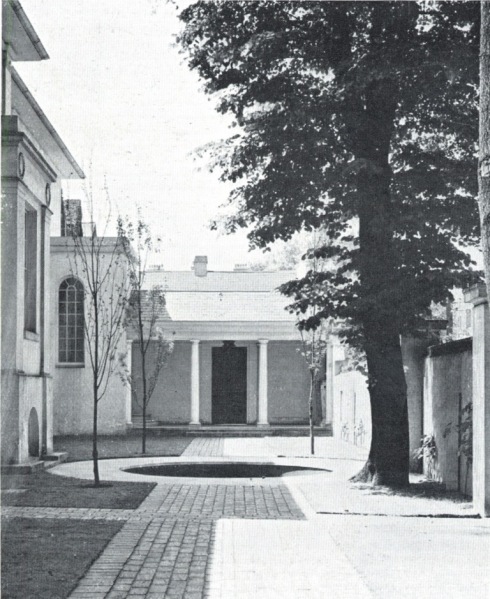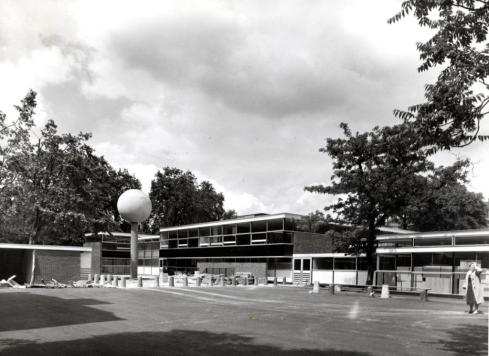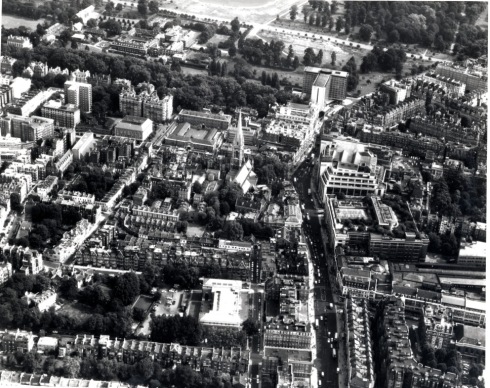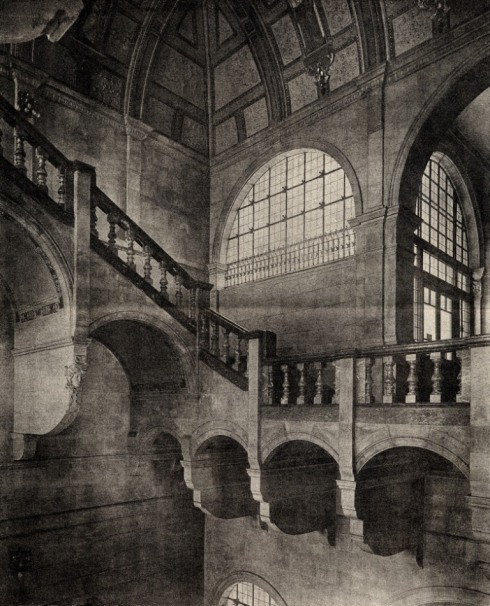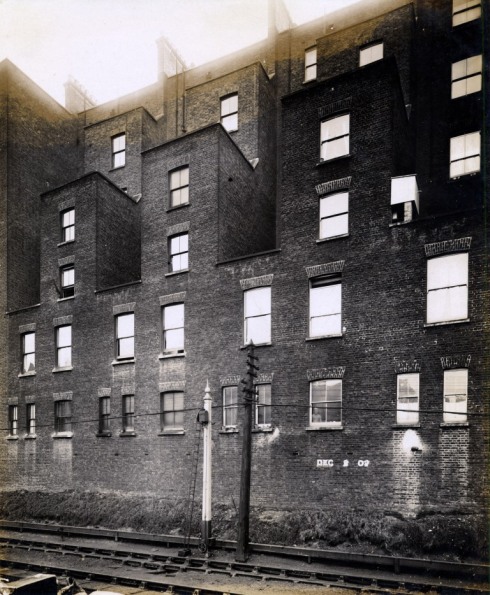Loyal readers know that we’ve spent a lot of time looking around the streets near South Kensington Station,in Pelham Street and Thurloe Street, even in the station itself, almost as much time as we’ve spent in the vicinity of Gloucester Road Station. It’s almost the deepest part of London for me, chronologically speaking.
(Although the deepest layers of all are Crystal Palace, Clapham South and the Wandsworth Road, places associated with my uncle who was a chef -right at the bottom of the memory pit are the dinosaurs of Crystal Palace, but more of them later.)
I thought I was more or less finished with this pleasant but not particularly beautiful space but then these three pictures turned up and started me on another small journey.
I think the photographer John Rogers was just looking at Melton Court, the block of flats which curves around the corner of Onslow Square and Old Brompton Road, with its curved parade of commercial outlets on the ground floor, facing South Kensington Station. In the 1970s, the area between the two had a number of raised grassy areas, some like the one above with useful benches for idle sitting around. Or you could just sit on the grass.
Surrounded by traffic, it was not the most salubrious spot in the world, but on a sunny day it was probably okay, spacious even, especially if you were travelling past by bus, or crossing the road to get the tube Of course traffic was lighter in the 70s so you could often just amble across the road.
And there always seem to have been plenty of places to stop and have a leisurely meal.
Here by the bus stop, Bistro Vino has been replaced by a modern version, a branch of Carluccio’s.At this end you can see the entrance for motor vehicles, with the route into the underground car park just visible.
At the other end a Post Office
Here is a centre front view, from an estate agents brochure.
From the same source, an aerial view shows the overall shape, and the size of the space at the back.
I’ve never seen the back in reality, (and the gates tend to be locked most of the time theses days) but John went round the whole building. In these pictures , the back looks like a perfectly respectable front entrance with a drive and ornamental trees.
Melton Court was built in 1935, which makes it an art deco building I suppose. Oddly, this links it for me with another block of flats built in 1938, Hightrees House in Clapham, where my aunt and uncle lived in the 1960s. Of course, I had no idea what art deco was back then. I would have related London buildings like these to TV shows. In this case Man in a Suitcase, starring Richard Bradford as the ex-CIA man McGill. It had several Kensington and Chelsea locations. There’s a block in Gloucester Road which has the same kind of vibe for me. According to the Survey of London, the original plans called for a cinema to be incorporated on the site but this never happened.
You can see buildings like it all over London.
Of course recognizing it a 30s building you wonder what was there before. This detail from an OS map gives a clue.
In the left hand corner, as you can see, a garden. A garden in front of Onslow Crescent.
The address still exists. Melton Court, Onslow Crescent. But Onslow Crescent was once an actual crescent, as in the picture below.
The destruction of the garden had already begun in this picture, as the lady in the big hat could probably see. Below it has progressed further.
Just a couple of trees surviving. The buildings on the right are of course still with us.
The original of the picture below is tiny.
But it shows the layout of the new open space and the boards behind which Melton Court will be built. See how clear the view is of the towers of the Natural History Museum, the Imperial Institute and the V&A.
The picture below shows tow buildings on the Old Brompton Road approach, the two on the right which can still be seen today beyond which is the other end of Onslow Crescent and between those, the Wills and Segar nursery, which was at 16a Onslow Crescent.
That was December 1934. By early 1935 the nursery had also been demolished.
It was one of the last of the Brompton area’s once numerous nurseries and market gardens.
Postscript
Back to Clapham now to a picture I must have taken when I was 11 or 12. One of those dinosaurs that live in the lowest levels of my London memory.
Megalosaurus, one of literature’s first dinosaurs. (Mentioned in the opening paragraph of Bleak House). Although I wrote Hyleosaurus on the back of the photograph (taken with a Kodak Instamatic, if you remember such things.) but that’s another one altogether. This pictures dates from a period after the refurbishment of the dinosaurs in the 1950s but before the ones in the 1970s and early 2000s. At this time the undergrowth was threatening to overwhelm the stone creatures. Thta’s when they look the most atmospheric. I remember being taken down there without any warning of what I was to see and being quite amazed, which is why the dinosaurs still sit at the bottom of my London memory. As they always will.





























































